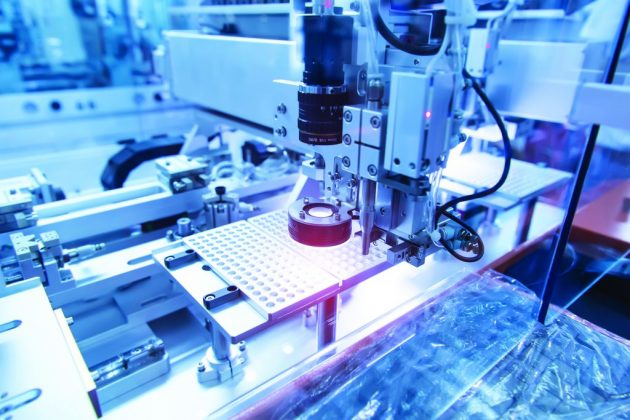
Canada’s role in the global advanced manufacturing supply chain
October 24, 2025
by Devin Partida, Editor-in-Chief of ReHack Magazine
Decision-makers in the industry can harness these strengths by continually investing in impactful programs, growing their networks and preparing manufacturing workers to sustainably contribute to an in-demand industry.

Sensor photo: kynny/Getty Images
Canadian companies have abundant potential to shape the global advanced manufacturing supply chain due to the country’s numerous strengths that boost its competitiveness, adaptability and worldwide reputation. Which aspects solidify this position, what challenges or opportunities exist, and how can producers maximize the positives?
Modernizing federal laboratories
Canada’s outdated federal laboratories limit its scientists’ ability to discover innovations to help its citizens, the world and many industrial partners. A partnership between two entities seeks to address that problem, partly by building new facilities. Scientists from 15 federal departments and agencies will work together to design and develop collaborative environments and eliminate organizational silos.
Scientists, researchers and industry partners will enable innovation, increase knowledge and solve problems. This program also prioritizes multipurpose science infrastructure, building a firm, adaptable foundation for future manufacturing needs and other requirements. The project’s first phase involves creating five science hubs that support teamwork. They will further areas such as technology, transportation safety and low-carbon improvements.
Embracing natural resources
Although urban-dwelling Canadians may be farther from their country’s natural resources, Preston Manning, former leader of the Reform Party of Canada, encourages them to notice how the natural world could enhance manufacturing opportunities
In a 2024 opinion piece, he positioned the country’s rural natural resource sectors as economic building blocks and production drivers. Manning explained manufacturers’ critical role in making the technologies and services that underpin related sectors, such as mining, food production and energy.
Canada’s natural resources also support the nation’s clean energy transition, which many manufacturers have embraced. One is aerospace manufacturer Bombardier, which adopted renewable energy and joined an industrial climate change action effort.
Investing in workforces
Worker development initiatives will fuel future manufacturing efforts and maximize adaptability. They will also attract investors by proving Canada’s preparedness. The nation’s economic growth and 15% federal corporate tax rate are among its attractive aspects. Skilled employees who are ready to tackle advanced manufacturing add to the appeal.
In 2025, the first cohort of students from St. Clair College’s battery manufacturing program graduated after completing five months of intensive training. One of those individuals secured a position at NextStar Energy’s Windsor plant, letting him begin applying his newly learned skills immediately. That company is one of the numerous industry partners for this worker development initiative.
The program’s administrators recognized the need for collaboration between numerous groups to create electric vehicle-related jobs that support Canada’s high-tech future. As of October 2023, Canada and the United States had over 68,000 charging locations, showing the demand for these cleaner cars.
Forging purposeful partnerships
Success in global manufacturing means connecting with entities that can offer services and support to maximize opportunities. In August 2025, Canadian government officials signed a memorandum of understanding with Cohere, a homegrown startup that develops large language models.
The concerned parties believe this pairing will strengthen Canada’s usage and exports of artificial intelligence, including in commercial and public service applications. It will also facilitate the country’s economic and technological leadership.
Manufacturers are some of the most prominent adopters of AI, using it to monitor equipment, improve training, detect safety violations and more. This strategic investment enables those continued applications and supports producers seeking more meaningful ways to incorporate the technology.
Leveraging current and future opportunities
These examples showcase Canada as a leader in advanced manufacturing. Decision-makers in the industry can harness these strengths by continually investing in impactful programs, growing their networks and preparing manufacturing workers to sustainably contribute to an in-demand industry.
They should also enable initiatives that bring together industry, government and academic professionals to express their opinions and challenges. Those diverse voices can illuminate which aspects need further support to optimize the outcomes and attract more employees to high-tech roles that stimulate the economy and meet global needs.